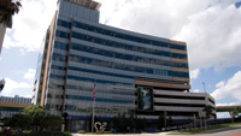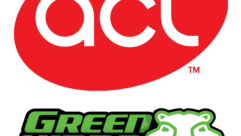
POV: Green Listings and Certifications
Aug 10, 2009 4:25 PM,
Provided by InfoComm International
The growing emphasis on green buildings and green design has naturally extended to an increased interest in green AV systems. The Leadership in Energy and Environmental Design (LEED) rating system by the U.S. Green Building Council has particularly spurred the AV community to become more involved in green systems. As a result, AV manufacturers are turning to various listings and certifications to differentiate their brands and to showcase their environmentally friendly products to the green building industry.
Cambridge Sound Management, in Cambridge, Mass., chose the GreenSpec listing by BuildingGreen as a way to associate its products with green AV and LEED projects. According to BuildingGreen, the online GreenSpec directory lists product descriptions for more than 2,000 environmentally preferable products that have been independently researched and documented.
According to Jack Heine, president and founder of Cambridge Sound Management, the pursuit of the GreenSpec listing did not impose any new costs to the business. “It was built into the cost of business since one of our current engineers was tasked with completing the process,” he says. “The total equaled about one man month or about $10,000 in labor based on an engineer’s salary.”
The GreenSpec listing applied to all of Cambridge Sound Management’s products since they are sold as a system. According to the company, its Qt Quiet Technology systems require an average of 8W of power to cover 30,000 square feet, or 20 times less power than other sound-masking systems. Saving energy is one green aspect, but Heine points out that sound masking also enhances the open feel of an office because of less construction and shorter cubicle walls. “Sound masking is an extraordinary tool in providing building comfort and usability,” he says.
The addition of sound-masking systems can often lead to lower overall costs for a building project. “For example, architects will overspecify acoustic tiles,” he says. “The cost of a fiberglass ceiling tile is approximately $5 per square foot, whereas a similar-looking mineral-fiber tile might cost half as much. For a 50,000 to 60,000 square foot building, sound masking costs $1 per square foot and provides significantly more benefit in speech privacy. Therefore, you can install a sound-masking system, downgrade the acoustical tile, get better privacy, and save money to boot.”
For AV projection screen and window shade manufacturer Draper in Spiceland, Ind., the pursuit of Greenguard certification by the Greenguard Environmental Institute (GEI) began four years ago. “We were hearing a lot about green buildings via our window shade business,” says Draper’s Contract Market Manager Chris Broome, CSI, LEED AP. “After some research, we learned that Greenguard is very recognizable by architects and builders.”
Draper currently holds Greenguard certification on all of its product types, in addition to GreenSpec listing for its window shade products. “Greenguard is an independent measurable standard. You must send materials to the lab, and there are strict standards for off-gassing. You’re also subjected to quarterly testing,” Broome says. “Greenguard uses independent testing, but you have access to the data, which is very helpful for sales and marketing.”
Energy Star certification by the U.S. Environmental Protection Agency (EPA) is another green certification upon which the pro AV industry has set its sights. Audio technology manufacturer Biamp Systems in Beaverton, Ore., pursued Energy Star certification for some of its products. The Energy Star logo is perhaps the best recognized symbol of energy efficiency because of its appearance on most household appliances such as dishwashers and washing machines. However, a recent issue has emerged: the lack of a professional AV category for Energy Star ratings.
As a result, Biamp is actively working with the EPA to formulate parameters for a professional AV category. “We are working as aggressively as we can,” says Ron Camden, vice president of North America sales at Biamp. “Energy Star is the most recognized symbol of energy-efficient electronics, and it’s our way of being able to participate in LEED-certified buildings.”
InfoComm International is a trade association representing the professional audiovisual industry.










